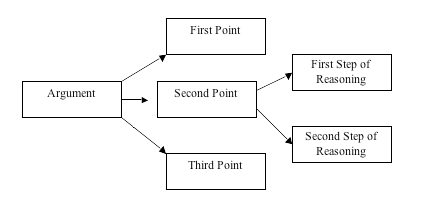| home | on rhetoric | blog | about benet | workshops | contact |
| © Benet Brandreth |
  |
|||||
|
ON RHETORIC Structure Structure – the importance of repetition The simplest way to structure your speech is the same way that you would structure an essay: Tell them what
you’re going to tell ‘em. A short introduction outlines the points that are going to be made. There is then the meat of the argument – following the outlined structure. Finally, the argument is summarized. This approach to structure aids audience comprehension in the following way: By identifying in advance what your points will be your audience knows what to expect and has mentally made the necessary compartments in its brain. Then the information comes in more detail and they can slot it away because they already see the connections. Finally, you remind them what points you made – so that if they missed it the first two times they have definitely got it the third time round. In other words – have a structure, make it visible and expect to repeat points. The latter in particular can prove difficult for the inexperienced because we are generally taught that repetition is a bad thing. But repetition is essential in oral rhetoric to facilitate the audience’s comprehension. There is no point having the world’s best argument if you canter through it so fast nobody can get a grip on it.
Structure – the importance of simplicity The elements of the argument must be broken down into groups. Those groups may themselves be grouped together. The result may look rather like the spider diagrams or mind maps sometimes used for taking notes. (Indeed spider diagrams are a very good way of organizing a speech – for this reason if no other.)
No matter how complex the argument it should be possible to reduce the myriad of individual steps of reasoning and pieces of evidence to positions on such a spider diagram. Moreover, it should be possible to collate them into groups – even if there is a degree of artificiality to the nature of some of the groupings. The aim should be to create a top layer of groupings no greater than three in number. Having done so it is only necessary to begin your speech by outlining the top layer. This serves to reduce the complex argument to manageable mental compartments for the audience. You can then treat each compartment as being a miniature speech of its own when it comes to the structure and repeat the “Introduction/Argument/Summary” structural pattern advocated earlier. |
